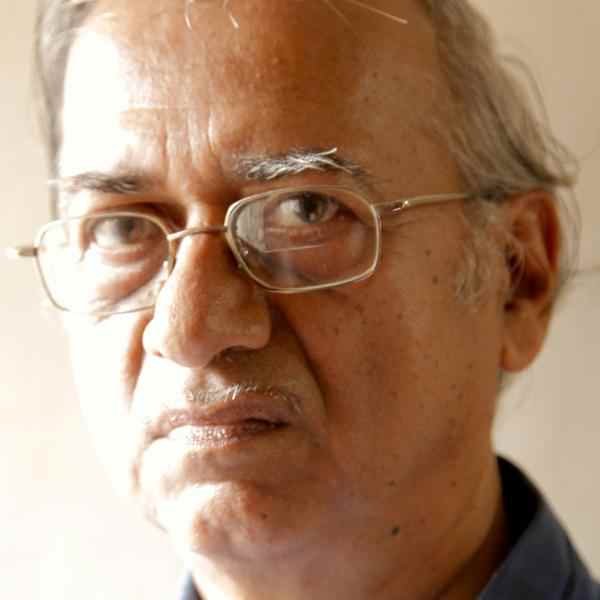Introduction
Through his One Village One Computer (1V1C) initiative, Anil Shaligram is making information technology relevant and accessible to rural communities in India by teaching underserved people to use computers as a means of tackling basic social and economic problems and setting up a network of locally run IT cooperatives. In Maharashtra, where Anil’s initiative began, villagers have used their new skill sets to take on many development issues like scarcity of water, unemployment, and education, where his train-and-empower strategies are making inroads nationwide. 1V1C promotes a democratic use of information technology to help people take ownership of solutions to community challenges.
The New Idea
Advances in information technology have little relevance for people who lack basic information and knowledge to identify and resolve everyday social issues. Starting from this premise, Anil is both teaching computer literacy and outfitting rural communities with hardware and software that have real applications in their lives. His One Village One Computer training program emphasizes computer functions like data and word processing, mapping, and analytical skills that can be used to gather information to support political and economic change. He has sought out and commissioned software programs that are specially tailored for rural communities. To ensure ready and affordable access to computers, he is also helping communities develop cooperative IT Seva Kendras (Service Centers) that are locally owned and run. The goal is to make them self-sustaining in the long term.
The Problem
Information technology today is an important economic driver for urban India. Private and public enterprises, large and small are experiencing its benefits, and huge investments are being made in the sector. Rural India, however, has been largely left out. Where computer access is available, it is costly, and people often lack the basic skills to make it a useful resource. Computer literacy in rural areas is seen more as a means of improving employment prospects than a tool for improving community life. 1V1C’s approach of demystifying technology is helping people to seek it out and embrace all its potential.
Available and accessible information technology can play an important role in promoting social change. For example, data collection in a vast and diverse country like India is a burden the government is often unable or unwilling to take on. While the lack of such information can hamper the implementation of government policies and services. However, when local communities collect their own data around unemployment, health, or other issues, they can force the government to take appropriate action. Computers are an important means of accessing information to connect remote villages with the larger society and economy. The Indian government, for example, is converting most of its systems to computers, but without the infrastructure or the skills to use them, rural communities remain as isolated as ever.
There have been many efforts in India to hasten the process of rural development through information technology, but these mostly rely on ready-made IT solutions and packages that do not necessarily match local needs. Privately run IT service centers and kiosks that are costly or limited in scope do not mingle with the existing social fiber or address real social needs. For example, large corporations like I.T.C. Limited offer market information for agricultural produce, but function more as buying and selling centers than as information resources. Other IT initiatives are based exclusively on Internet connectivity, a hard sell in places that lack the infrastructure to support expensive cable lines and telephone connections.
Most of the efforts thus far have also adopted a top-down, private enterprise approach that treats local communities as consumers of a service. Rather than integrating rural people and giving them a stake in technology development, these initiatives tend to deepen the divide. And since social issues are not the priority of the large multinationals and private companies that dominate IT development, there has been little effort to study or promote the use of IT tools for rural empowerment and poverty alleviation.
The Strategy
Despite its name, the One Village One Computer training program often begins without a computer. It starts instead at the level of awareness: What is information technology? How do you get it? And what do you do with it? Anil uses local gatherings to demystify computers and help rural people understand how they can use technology to their advantage. The will to acquire skills and mobilize resources follows from this awareness. 1V1C then offers locally driven computer literacy training, and works with villagers to set up community-owned IT cooperatives to ensure democratic access.
Anil first implemented his idea as a pilot project in Maharashtra, in a village with 8,000 landless and migrant laborers. Working with the Landless Laborers Union, Anil provided the villagers with training in simple IT processes like the use of the computer in collecting and storing data followed by methods to analyze the information. Participants used their new skills to collect and sort data on the frequency and prevalence of diseases in their area, and then presented the information to the government in support of their demand for better health services. The evidence was enough to convince the state health authorities to respond and improve services to the community.
The success of the pilot project encouraged Anil to spread his work to other areas. His team of 7 dedicated state-level members and additional local volunteers formed an effective platform to reach out to rural people. 1V1C is now working in 52 villages in 15 districts. After meeting with villagers to generate interest, the team organizes five-day computer training camps in each area, in which as many as 150 people participate. They learn simple applications like word processing, graphic design, email programs, spreadsheets, presentation software etc., and use the skills to begin basic advocacy work, such as drafting letters to the local administration. “Our methodology is different from formal training. At every step we constantly connect the teaching to immediate problems faced by the villagers,” Anil emphasizes.
Once the training process has begun, Anil mobilizes civic organizations, elected representatives, and local youth to form computer support committees (CSCs) to decide and take charge of advocacy projects. Communities where 1V1C has worked have tackled issues such as employment, health, and resource distribution. For example, several villages collected data on the extent and prevalence of unemployment, and used it to lobby the government to release more jobs under its Employment Guarantee Scheme. In villages where this effort was successful, average earnings have increased markedly, and more than 2,000 people have benefited from increased employment opportunities.
Anil has also focused on finding and developing special software to meet specific local needs. To help villagers better understand and manage their water resources, Anil partnered with Ajit Foundation to bring in a water mapping program JalChitra designed to help laymen predict shortages and improve planning and usage. Villagers who once had no idea what their village looked like or where their water sources lay, were able to use their graphic design skills to map their land and launch local water auditing projects. The water management pilot project in Beed district was successful in storing 4,000,000 liters of water in its first experiment, and the initiative is now spreading to 35 districts. Anil also worked with a group of technology experts in India and abroad to develop software around rural health and employment, culminating in the ‘1V1C-Akruti Marathi’ local language software package that is now being used throughout Maharashtra. A leading management and business studies institute is also partnering with Anil in research and surveys, and the country’s biggest Indian language software company is helping to develop relevant content in regional languages.
Access to hardware is just as crucial as skills and software in rural communities where computers are expensive and scarce. To ensure the democratic spread of information technology, Anil has introduced IT Seva Kendras, computer service centers that are run on a cooperative model. The five centers set up thus far are either collectively owned by the community, or are part of existing civil society organizations. The centers are run by rotating, elected committees that include both men and women. The information generated belongs to the people, and villagers recognize themselves as valuable contributors to their own development as they take ownership of 1V1C activities. Each cooperative is comprised of village members, and once a critical mass of IT Seva Kendras is in place around the country, Anil plans to register them as a single cooperative network. Anil also runs a capacity-building program, training villagers in hardware, hardware repair, and organizing social networks around computers to further integrate IT into village life.
Anil has found numerous partners for his work, including the government, which granted 1V1C US$50,000 for training in 2004 as part of its Science Awareness Year. Civil society organizations large and small have been tapped to assist with outreach, and Anil has partnered with the Colorado Chapter of Asha for Education and Patni Computer Systems, a leading computer firm, to support his training and education programs. He has also invited socially oriented youth with special skills in software and Web development, media, fundraising and other relevant areas to get involved as volunteers.
The Person
Anil grew up in a middle class ordinary family and whose introduction to social issues was through his father who was t closely associated with socio-political movements of the 1960s. During his undergraduate days Anil too was drawn into the student movements of that time, like many of the youth of that era. And it is to this association that Anil attributes his social insights and sensitivity to these experiences of his association to the social movement.
Anil has a graduate and his postgraduate degree in physics and mathematics reinforced his belief in scientific knowledge and their power to change the world. He was one of the early believers of the use of computers as the thing that would revolutionalise the world. After completing his education Anil set up his own DTP business that he used to run until about 2 years agos and simultaneously spent many hours reading books and magazines on the world of computing.
However with time Anil soon got disillusioned and frustrated as he rarely saw any linkages between the great-developed world of computing and instances of change among lives of people living in rural India.
Rather than stew in his own frustration, Anil put his own insights to use and Anil started writing articles about IT for development in periodicals and newspapers especially in Marathi, the regional language of his home state. His quest for exploring the relationship between the computing world and social development soon connected him with other social work practioners, activists, an association with whom firmed up Anil’s thoughts and ideas constantly. It was around the 1999-2000 that it was through one his associations, that Anil’s idea were implemented as an experiment in a couple of villages, which proved successful in helping solving a particular social problem. This was the birth of 1V1C the organization. (Whose name is borrowed from one of Anil’s early literary contributions.).
Having developed his thoughts and ideas into a unique approach and with the support of a like minded individuals Anil started taking the 1V1C approach to many more villages and districts over a period of 2-3 years. In order to really do justice to his idea, Anil disassociated himself from his successful, DTP business and focused totally in building 1V1C. He is now in the process of winding up his business.
Anil Shaligram the driver or person behind an innovative social model One Village One Computer or popularly known as 1V1C lives in an extension suburb of Mumbai, known as Thane, with his young teenage daughter and his wife.




